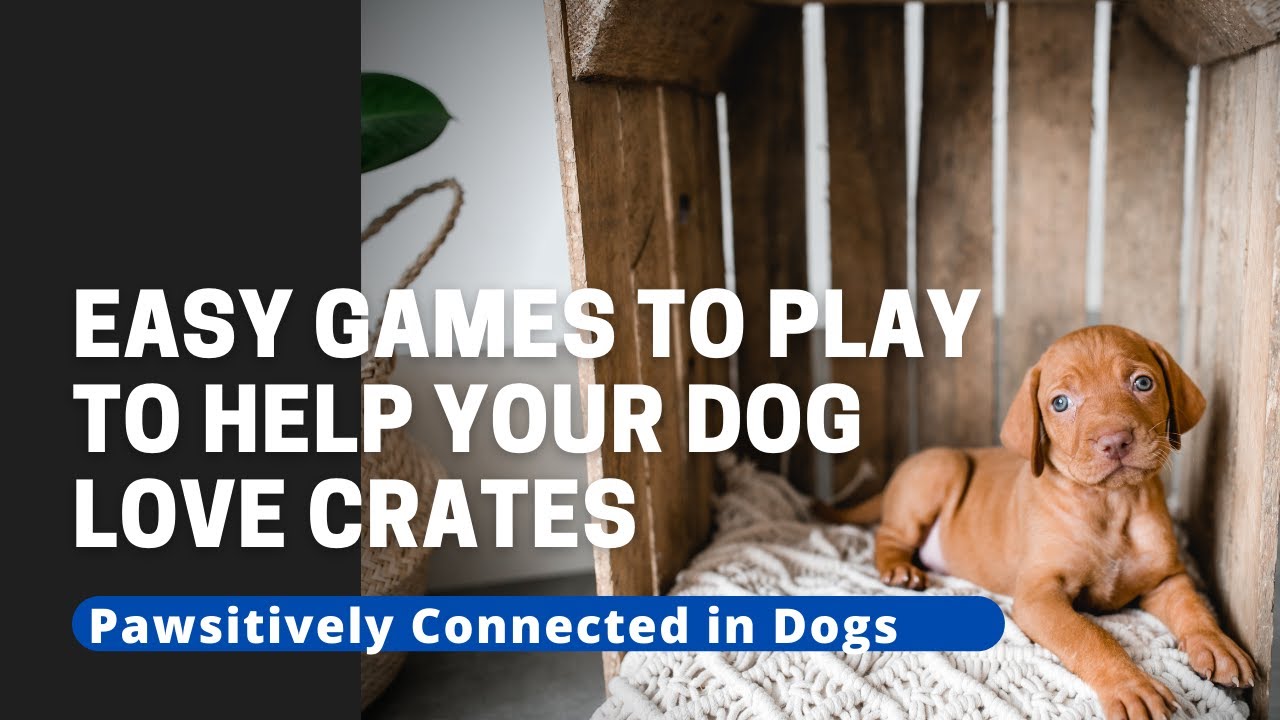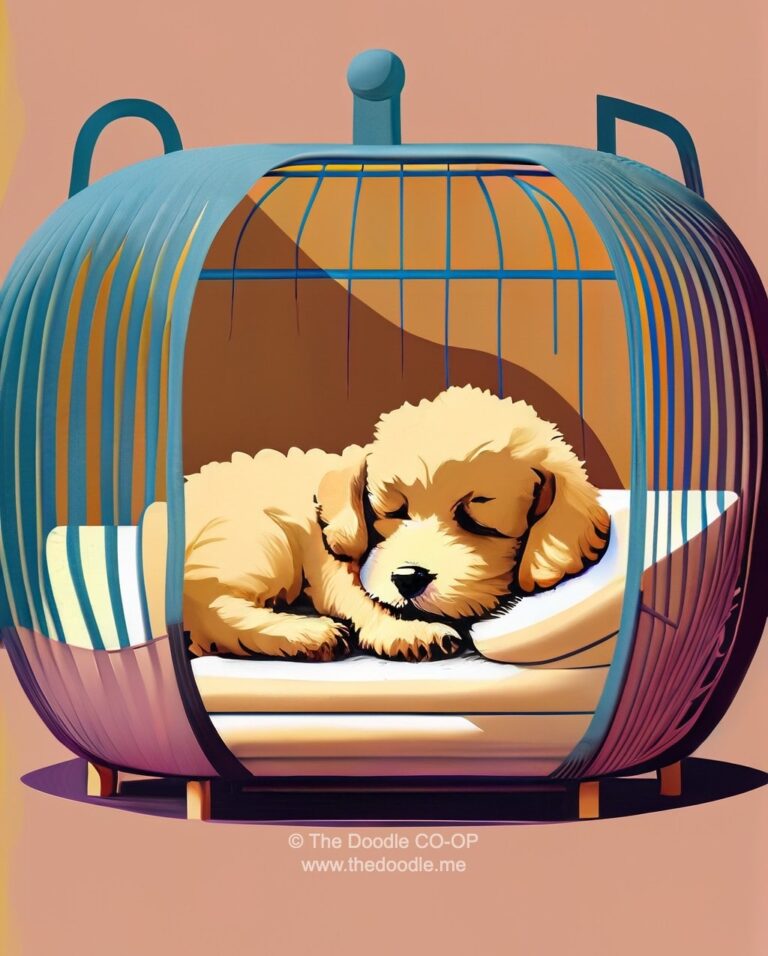Goal Behavior:
The puppy willingly enters the crate on cue and settles calmly. When the door is opened, the puppy waits until invited to exit the crate. Duration will be achieved in increments; the goal is for the puppy to be relaxed and quiet in a crate, with or without people present, for several hours and/or overnight.
Training Session Objectives:
Build a strong reinforcement history for entering the crate and remaining quietly in the crate for increasingly longer periods of time. In early sessions, you will remain in sight but will eventually step out of the room for brief periods, returning to reward the puppy for quiet, calm behavior. Continue rewarding calm behavior in the crate and gradually expand the time between rewards. Food-stuffed toys can be utilized if you need to leave the puppy for a prolonged length of time that the puppy has not been prepared for.
Please review the post Food Containing Toys: Stuffed Kong and Wobbler for guidelines on use.
Prerequisites:
Puppy is relieved and not too hungry, which might make him frantic and unable to settle.
Session Set Up:
• Crate should be placed in an area where the puppy will not feel abandoned but where there is not a huge amount of activity that might stimulate the puppy. A quiet corner of the living room or bedroom is ideal.
• Crate should be an appropriate size for the puppy. If using a wire crate, cover it for training purposes which will enable an easier transition to a plastic crate. (Some pups only trained in a wire crate may need some retraining in a plastic crate.)
• Crate may need to be placed on a pad of some kind if the flooring underneath causes the crate to slide or makes it too noisy and scares the puppy.
Food rewards should be puppy’s regular kibble unless instructed your puppy is not very ‘food-motivated’, in that case utilize play and/or praise methods of reinforcement.
Video reference

Steps
Note: We are not marking for the puppy entering or being in the crate. We are utilizing classical conditioning – teaching the pup that the crate is a great place to be by associating it with food. This is similar to “Food Rewards for Calm Behavior”.
1. Start with bottom half of crate. Let the pup see you have food. Lure into crate and place kibble successively deeper into the crate so he goes further in. After initial introduction food will always be placed at the back of the crate. When pup turns around, meet him before he exits and give him several pieces of food. Do not feed when he comes out of the crate. (When in the vicinity of a crate, food only happens in the crate).
2. Wait until puppy steps into crate bottom then throw kibble into back of crate. Don’t move the hand to food bag until the pup steps into the crate. When pup turns around meet him before he exits and give him several pieces of food. Do not feed when he steps out. Quietly drop a kibble into the back of the crate as he’s exiting so that a kibble is already there for him when he steps into the crate again.
3. Add the top half of the crate secured to the bottom half but still with no door. Ideally an assistant can place kibble in the back of the crate unseen by the puppy. You can unobtrusively place the kibble with one hand while feeding the pup with the other hand at crate entrance. Puppy goes in, eats kibble, turns around and receives several food rewards at crate entrance.
4. Do not preset food in the crate. Wait until puppy chooses to go into the crate. Wait it out, he probably will go in. Reward after he turns around before he exits the crate. Occasionally drop some food in the back of the crate while puppy is already inside.
5. Put the door on the crate, wide open. Have an assistant place a kibble in the rear again or pre-load the crate yourself. If he doesn’t go in after a while, move away from the crate (the pup has lost the opportunity for a reward.) After he turns around in crate, feed at open door before pup exits. If pup is hesitant to come out, lure a few times with kibble. Repeat several times.
6. As pup is waiting at crate entrance to be fed, close door and feed through door five or six times. Then delay feeding for four to five seconds and feed several pieces again. Repeat several times. Increase duration. Hold the gate closed so that he doesn’t push it open. Feed several pieces at entrance when you open the door and before he exits.
7. Now latch the door and repeat as above. Increase duration between feedings to ten to twenty seconds.
8. You walk away from crate, returns, feeds through door. Do this multiple times with varying, unpredictable duration. Set crate near a doorway so you can go out of sight briefly.
9. Increase noise/distraction when away from crate. Return and reward after shorter duration when first introducing noise/distraction.
10. Put the puppy in the crate and leave the room, return to praise and feed intermittently. Continue to reward randomly for quiet, calm behavior in crate.
Key Points
• Add the verbal cue only when you are certain the puppy will enter the crate.
• Do these games fifteen minutes before bedtime to tire pup’s brain before bedtime.
• Give the puppy a food-stuffed Kong if he has to be left in the crate for more time than he has been
prepared for (see guidelines for Food Containing Toys: Stuffed Kong and Wobbler).
• If the pup does not want to exit the crate, let 10 seconds go by, then offer food.
• With this foundation laid, if puppy persistently barks for attention, correct with a long line through the
crate door as described in the manual

